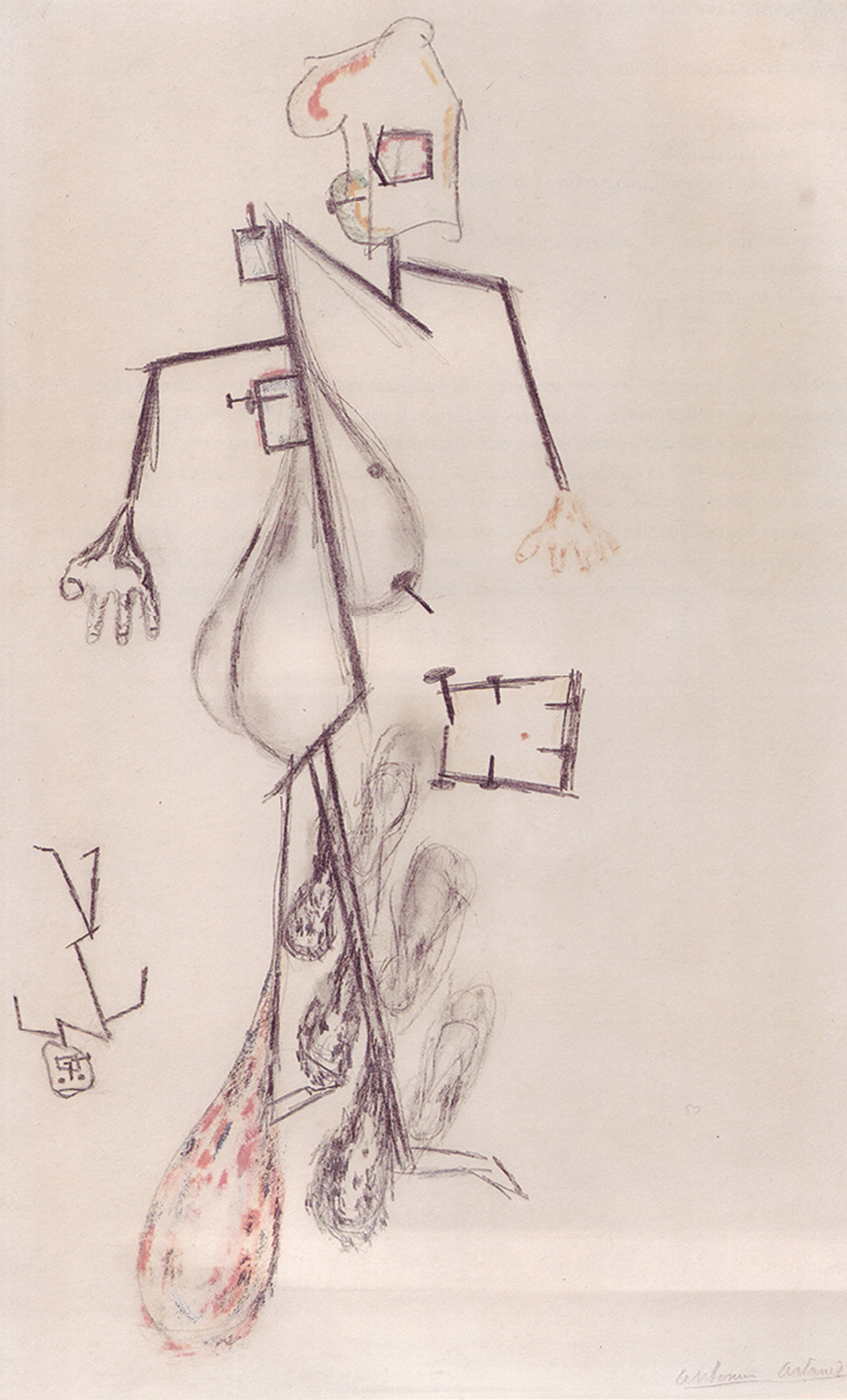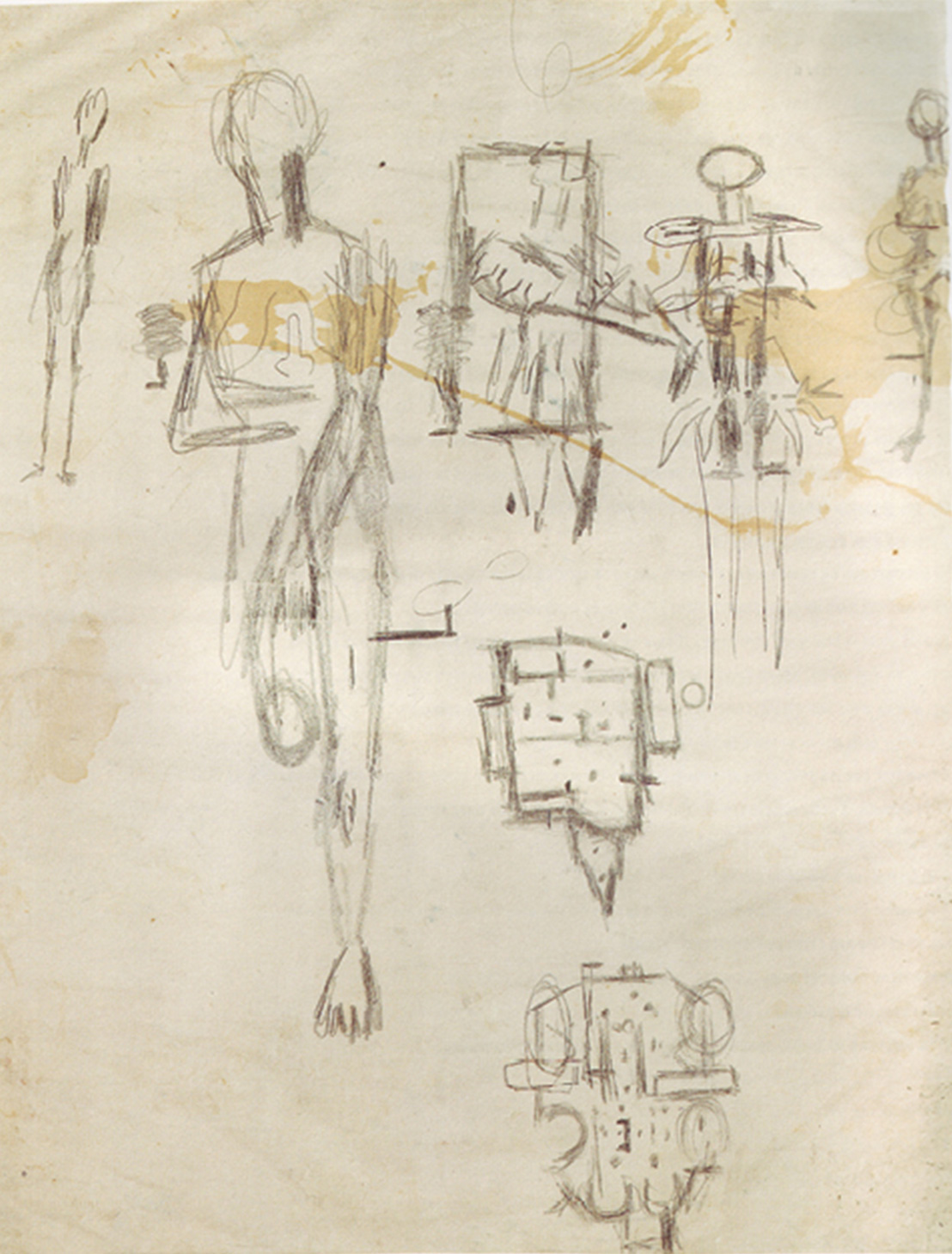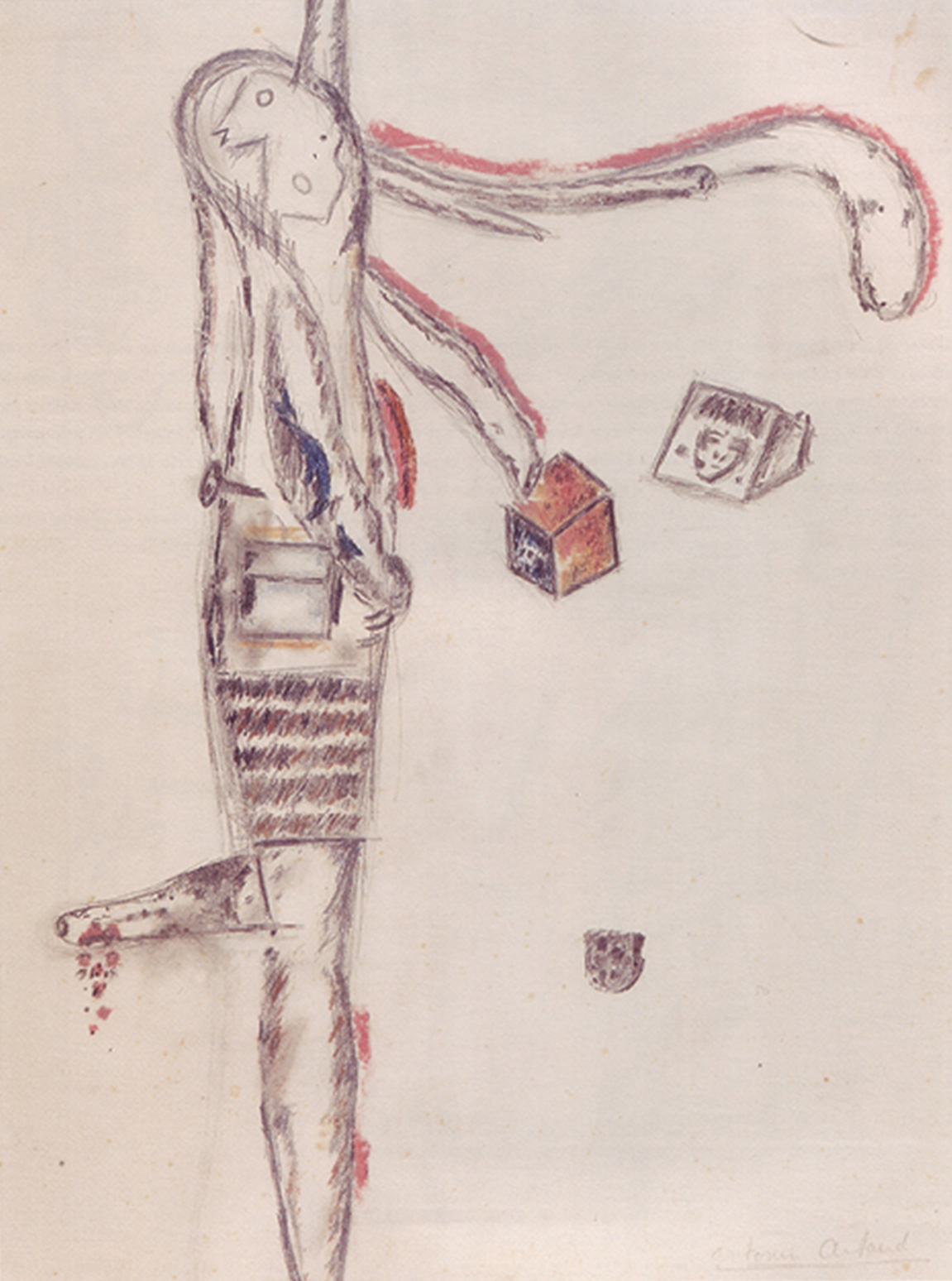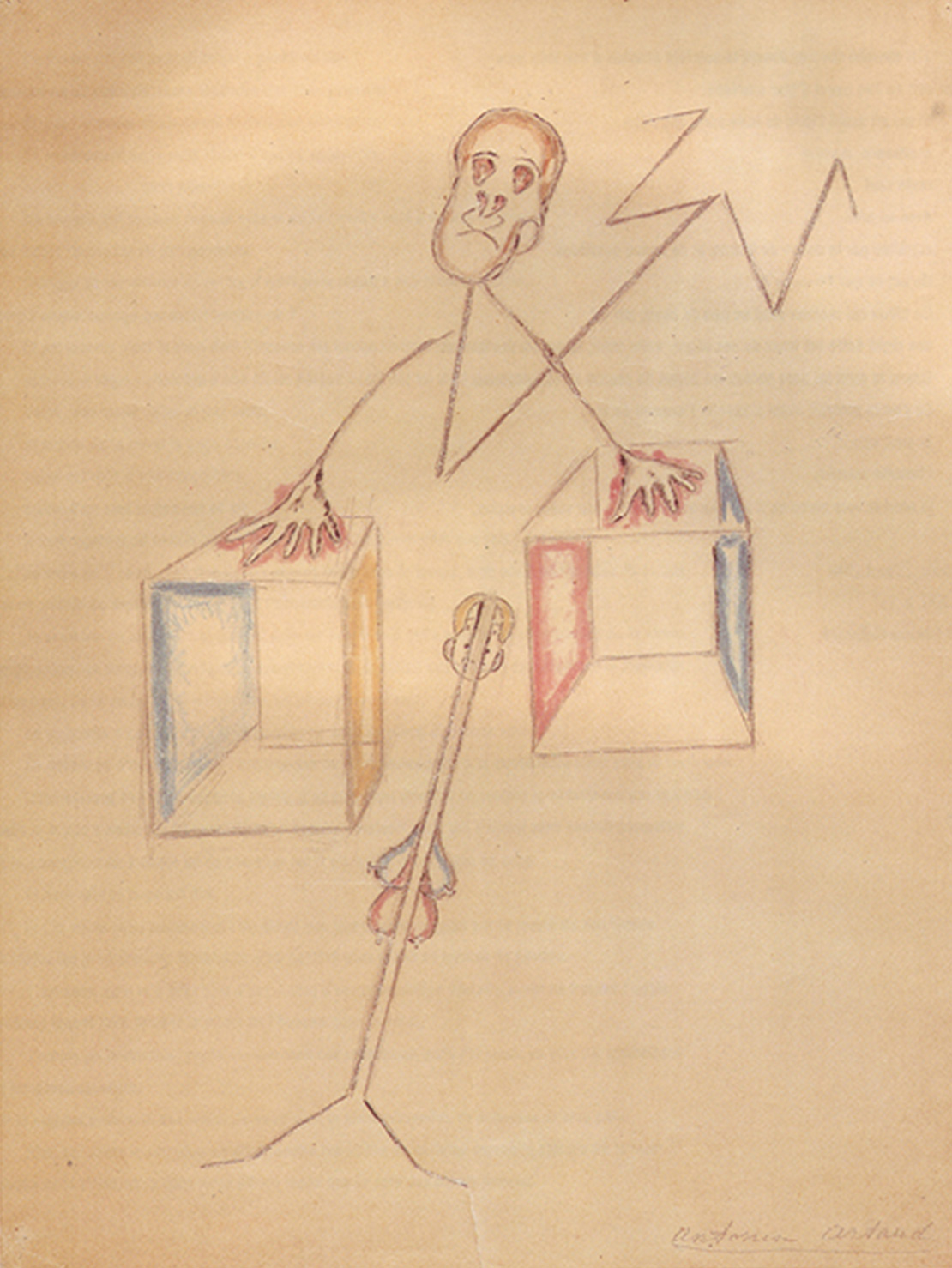Phantoms
Bodies without organs
Daniel Heller-Roazen
When the eleventh volume of the Archives de Neurologie appeared in 1882, it contained an extended medical study by a physician whose name remains to this day little known outside France.[1] He was Jules Cotard, a French neurologist born in 1840 who had studied medicine in Paris with Paul Broca and Afred Vulpian before working under Jean-Martin Charcot at the famous clinic of the Salpêtrière Hospital. Cotard began his essay with a tribute to C. Lasegue, the physician who had published “an important report” in 1856 on melancholic ailments, paying particular attention to persecution delirium. Cotard recalled that the 1860s and 1870s had witnessed significant progress in research into the diverse symptoms and structures of melancholia.[2] But much more was still to be learned in the study of melancholia. Scholars, he noted, “have offered careful descriptions of simple melancholia, melancholia with stupor, and anxious melancholia; they have established that these forms are often intermittent, that sometimes they become continuous and chronic.”[3] Nonetheless, Cotard wrote, “the characteristics and the successive phases of the delirium that end in this chronic state have not, to my knowledge, been the object of any study equivalent to the study offered for persecution delirium.”[4]
Cotard declared that he would now “exhibit a particular development of delirium,” to which, in accordance with scientific custom, he proceeded to assign a technical name: “negation delirium.”[5] He quickly explained the designation. “If one asks them what their name is,” Cotard wrote, introducing the ailing patients he would now discuss, “they do not have one.” If one asks them their age, “they do not have an age.” “Where were they born? They were not born. Who were their father and mother? They have no father, mother, and no children.”[6] But these melancholics of negation presented the physician with a further characteristic, which was even stranger, for it touched on the physiological object of medicine itself: the body. When asked if they suffered from headaches, stomach aches, or “pains in any part of the body whatsoever,” these delirious patients answered in terms no less astonishing for their simplicity. “They have no head. They have no stomach. Some,” Cotard wrote, “have no body.”[7]

Antonin Artaud, L’homme et sa douleur, April 1946.
“No mouth / no tongue / no teeth / no larynx / no esophagus / no stomach / no intestine / no anus.” The poet and theater director Antonin Artaud wrote these words in 1948, the year of his death. They famously appear at the beginning of Deleuze and Guattari’s Anti-Oedipus: Capitalism and Schizophrenia (1972), which adopts Artaud’s idea of “the body without organs” to illustrate their romantic notion of the schizophrenic’s free-flow of desire. In the catalog essay for his recent exhibition “Mélancolie,” the curator and critic Jean Clair has criticized this appropriation of Artaud as a misdiagnosis, and has suggested that Artaud had Cotard’s syndrome. Artaud was first institutionalized in 1937 after suffering a series of violent hallucinations, for which he underwent fifty-one electroshock treatments; he was released in 1946. The drawings here, made by Artaud during his last two years under psychiatric care, depict the body in pieces, with missing members and disjointed parts.
A few pages later, the psychiatrist offered a summary typology of the ailments he believed himself to have identified. Before introducing a host of clinical evidence, he explained that he would adopt a threefold system of classification, distinguishing between several categories of a single malady: those “cases in which negation delirium presents itself in its simplicity”; those in which negation delirium is, by contrast, “symptomatic of general paralysis”; and finally, those in which negation delirium is associated with persecution delirium, constituting “forms of complex alienation,” such as “ideas of ruin, guilt, distrust, and persecution” which “almost all other authors” had failed to tell apart from straightforward melancholic delirium. As illustration, Cotard proceeded to offer a selection of clinical cases, drawn from the notes he had taken as a practicing physician at the psychiatric center of Vanves in the 1860s, 1870s, and 1880s:
Madame E., fifty-four years of age, married, mother, is put in the Vanves medical center June 15, 1863, after having made various suicide attempts. Madame E. is in a state of anxious agitation. … She imagines that she has a shrunken throat and a displaced heart. In paroxysms of agitation, she cries out and complains aloud, always repeating the same sentences. All her organs have been displaced; she cannot do anything about it. …1864.—Same delirium, same anxious paroxysms, with the continual repetition of the same formulaic phrases. Madame E … is lost; she no longer has a head; she no longer has a body. …
The negation delirium becomes ever more forceful. Madame E … has neither arms nor legs. All the parts of her body have been transformed.[8]
Madame C., forty-three years of age, married, mother, entered the Vanves health center in November 1880. … Madame C. believes she no longer has a stomach; she believes that her organs have been destroyed and attributes this destruction to an emetic that was in fact administered to her. … Madame C. claims that her throat has been removed, that she no longer has a stomach, that she no longer has any blood.[9]
Monsieur A., forty-eight years of age, put in the Vanves health center in March 1879, following a suicide attempt, is in a state of intense anxious agitation. … His brain has turned soft; his head is like a hollow nutshell. He has no penis; he has no testicles; he no longer has anything at all.[10]
Monsieur C., forty-five years of age, of a sturdy constitution, married, father. … Sometime near March 1880, he began to express negative and completely absurd ideas. … Brought to Vanves in April 1880. … Monsieur C. insists that he is not married, that he does not have children, that he has neither a father nor a mother, that he has no name. … Monsieur C. resists all care that is taken as to his body; he refuses to don clothing because his whole body is nothing other than a large nut. He refuses to eat, for he has no mouth; he refuses to walk, for he has no legs.[11]
Cotard published reports of a total of eleven such cases, to which he added a series of bibliographic indications for further study, as well as a synoptic table in which he presented the similarities between the negation delirium he had observed and the persecution delirium considered by others before him.[12] By the conclusion of the second portion of his study, which bore the programmatic title “On Negation Delirium” (“Du délire des negations”), the defining traits of the new ailment were beyond all doubt. The various melancholic patients the French psychiatrist had observed suffered, in different ways, from a single sensory delusion: with great insistence, they all felt the lack of bodily parts that they nevertheless did, by all objective accounts, possess.

Cotard’s two-part paper of 1882 was followed by three further clinical and theoretical contributions to the study of forms of melancholic deliria: an essay on “Loss of Mental Vision in Anxious Melancholia” published in 1884, an inquiry “On the Psychomotor Origin of Delirium” of 1887, and a note on “Enormity Delirium” which appeared in 1888.[13] That year the psychiatrist’s contributions were abruptly interrupted: the French physician had been assiduously treating his own daughter at Vanves when he acquired and succumbed to a case of diphtheria. Three years later, in 1892, his colleagues dedicated the third annual conference of their association for the study of mental illness to his memory.[14] The report on the “conference of Blois,” as it is called, contains mention of contributions by such figures as Falret, Garnier, Charpentier, and Jules Séglas, who had himself published a response to Cotard’s “Negation Delirium” as early as 1887, entitled “Anxious Melancholia with Negation Delirium.” It is at this point that the psychological phenomenon identified by Cotard can be said to have entered the clinical vocabulary of nineteenth-century French psychiatry as a whole, above all through its definition as a “psychic state proper to the chronically anxious,” and, therefore, less as a “delirium” in its own right than as a “syndrome”: “the Cotard syndrome,” as E. Régis baptized it at the conference of 1892, and as it would subsequently be known.[15]
Discussing the curious syndrome in a lecture on “Anxious Melancholia and Negation Delirium” given and published in 1894, Jules Séglas argued that the ailment identified by Cotard could in fact manifest itself in several distinct forms, which ought to be clearly separated by the clinician and the theorist.[16] Each form of the malady could be defined, he argued, by the type of object it involved. An anxious melancholic may, first, deny aspects of his or her “moral or intellectual personality.” “He would then declare, for example, ‘that he no longer has a heart, no longer has feelings, no longer has a mind, and that he no longer thinks.’”[17] He may also negate objects in the external world. “One shows him a flower,” for instance, “and he denies that it is a flower; there is nothing around him, neither things nor people; he is in a void.”[18] And, finally, he may deny his “physical personality.” “This,” Séglas wrote, “is the hypochondriac of negation,” the figure so vividly evoked in Cotard’s first essay. “The patient says: ‘I no longer have blood; I no longer have veins; I no longer have a brain; I no longer have genital organs. I am as empty as a cupboard.’”[19]

Such symptoms of unease may appear to be remarkable and even unique. But they bear more than a passing resemblance to a better-known set of sensorial delusions identified in modern medicine only a few years earlier in the US. Barely a decade before Cotard revealed his findings to French psychiatry, Silas Weir Mitchell had described and analyzed a startling variety of perceptions that he attributed to bodily parts he boldy named “phantom limbs.” A physician in the Army, Weir Mitchell had collected ample evidence of the phenomenon working in the Civil War and in its aftermath. “Nearly every man who loses a limb,” Weir Mitchell explained, “carries about with him a constant or inconstant phantom of the missing member, a sensory ghost of that much of himself, and sometimes a most inconvenient presence, faintly to be felt at times, but ready to be called up to his perception by a blow, a touch, or a change of wind.”[20] “There is something almost tragical, something ghastly,” he commented, “in the notion of these thousands of spirit limbs haunting as many good soldiers, and every now and then tormenting them with the disappointments which arise when, the memory being off guard for a moment, the keen sense of the limb’s presence betrays the man into some effort, the failure of which of a sudden reminds him of the loss.”[21] Like a specter, the phantom limb could fade away, only to return unanticipated years after its disappearance, and then to vanish again; but even when felt as present, the neurologist explained, the absent member could not clearly be situated with respect to the seen body, being “rarely felt as a whole.”[22] With the sensed body, without being one with it, the “ghostly members” introduced into the field of bodily sensation a perplexing perception, which seemed hardly a perception at all.
To be sure, certain differences between the sensory delusions identified in the 1870s and 1880s in the United States and in France are beyond all doubt. The first of the two ailments is neurological in nature and can be explained with reference to the functions and dysfunctions of the sensory apparatus in its physiological structure. The malady described by Cotard, which is psychiatric and psychological in kind, points, by contrast, to an anxious melancholia. But the sensation of the phantom limb and the perception of the negated part also bear resemblances that can hardly be denied. To be more precise, one seems, in truth, the mirror image of the other. A moment’s reflection suffices to grasp the point. Those who suffer from what the American physician termed “neural maladies of stumps” feel limbs they do not possess, just as if they did; those who suffer from “deliria of negation” fail to sense the limbs they, in fact, do possess. One might easily multiply such formulations. The patients described by Weir Mitchell sense in their bodies a presence none but they can see; those identified by Cotard, instead, sense in their bodies absences that none but they will grant. The first of the two sets feel themselves to possess that which, by all accounts, they lack; the second feel themselves to lack that which, by all appearances, they do possess.

In all these variously deluded sensations, the reality of one fact cannot be denied. The nineteenth-century perceptions of parts in presence and in absence remit those who feel them to a being, affirmed or negated, which is neither a thinking thing within them nor an extended thing beyond them, neither their own consciousness and mind nor any worldly object clearly external to themselves. In feeling themselves to be more and less than they seem beyond all doubt to be, the veteran and the melancholic patients bear witness to a common difficulty of representing the nature and parts of their own organic mass. They suffer from a disturbance of the faculty that the nineteenth-century physicians, and many after them, called “coenesthesis”: the sensation of the organism as a living mass. Feeling the presence of limbs where they are absent, sensing the absence of parts where they are present, the patients described by Weir Mitchell and by Cotard cast an unexpected light on the perceptions that sentient beings possess of their own bodies. For those perceptions, the nineteenth-century figures all suggest, are perceptions of phantoms: beings that, felt in presence or in absence, are by scientific standards none at all.
“Delusion” is one name for such a feeling, which cannot be referred to any object seen and named by the specialists in the study of the body and the soul. And the neurological and psychiatric patients described by Cotard, as by Weir Mitchell, seem without doubt to have been, in part, deceived about the internal and external extensions of the bodies they called their own. But the truth of the matter is more complex than such a summary judgment would suggest. For however deranged they seemed and still seem today, the sensations of the nineteenth-century patients contained at least one veritable discovery. All the men and women who failed to feel themselves where they truly were, like those who felt themselves to be where they in fact were not, perceived a fundamental fact few scientists and thinkers in their age and after it have registered with equal force: the ultimate delusion may be to believe that sentient beings, in sickness or in health, could perceive their bodies to be wholes composed of anything but ghostly parts.
- Jules Cotard, “Du Délire des negations,” Archives de neurologie, no. 11 (1882), pp. 314–344; now in J. Cotard, M. Camuset, J. Seglas, Du Délire des négations aux idées d’énormité, preface by J.–P. Tachon (Paris: L’Harmattan, 1997). All translation my own. Further citations to Cotard’s works will be to this edition. On Cotard and his “syndrome,” see, among others, Jorge Cacho, Le Délire des négations, Psychopathologie du syndrome de Cotard, De la mélancholie anxieuse à la folie systématisée (Paris: Association freudienne internationale, 1993); Marcel Czermak, Passions de l’Objet, Études psychanalytiques des psychoses (Paris: Joseph Clims, 1986), chapter XI, “Signification psychanalytique du syndrome de Cotard,” pp. 205–236. Cf. the remarks in Jacques Lacan, Le Séminaire, Livre II: Le Moi dans la théorie de Freud et dans la technique de la psychanalyse (Paris: Le Seuil, 1978), pp. 275–281.
- As evidence, Cotard cited the works of Morel, Foville, Elgrand du Saulle, and especially Falret, who had recently presented a summary of the successive phases and evolution of mental and nervous illnesses before the Medico-Psychological Society. See Jules Falret, “Du Délire de persécution chez les aliénés raisonnants,” Annales médico-psychologiques, no. 20 (1878), pp. 396–400; “Des aliénés persecutes raisonnants et persécuteurs,” Annales médico-psychologiques, no. 19 (1878), pp. 414–415; Études cliniques sur les maladies mentales et nerveuses (Paris: J. B. Baillière et fils, 1889).
- Cotard, “Du Délire des négations,” p. 25.
- Ibid.
- Ibid., p. 26.
- Ibid.
- Ibid.
- Ibid., pp. 39–40.
- Ibid., pp. 43–44.
- Ibid., p. 45.
- Ibid., p. 47.
- Ibid., pp. 50–53.
- Jules Cotard, “Perte de la vision mentale,” Archives de neurologie, no. 21 (1884), pp. 345–350; “De l’Origine psycho-sensorielle ou psycho-motrice du délire,” Annales médico-psychologiques, 1887, pp. 351–357; “Du Délire d’énormité,” Annales médico-psychologiques, no. 7 (1888), pp. 465–469.
- Cotard, Camuset, Séglas, Du Délire des négations aux idées d’énormité, pp. 77–166; cf. Cacho, Le Délire des négations, pp. 135–197.
- On the identification of the “syndrome,” see Cacho, Le Délire des négations, pp. 164–169, and, on the distinction between the delirium and the syndrome, p. 169.
- Jules Séglas, “Le Délire des négations dans la mélancholie,” lecture given 25 February 1894 summarized by H. Meige in Journal des connaissances médicales nos. 30, 31, and 32 (1894), now in Cotard, Camuset, Séglas, Du Délire des négations aux idées d’énormité, pp. 179–207.
- Cotard, Camuset, Séglas, Du Délire des négations aux idées d’énormité, p. 185.
- Ibid.
- Ibid.
- Silas Weir Mitchell, Injuries of Nerves and Their Consequences, with a new introduction by Lawrence C. McHenry, Jr. (New York: Dover Reprints, 1965), p. 348.
- Silas Weir Mitchell, “Phantom Limbs,” Lippincott’s Magazine, no. 8 (1871), pp. 563–569, pp. 565–566.
- Mitchell, Injuries of Nerves, p. 350.
Daniel Heller-Roazen is professor of comparative literature at Princeton University. He is the author of Fortune’s Faces: The Roman de la Rose and the Poetics of Contingency (The Johns Hopkins University Press, 2003) and Echolalias: On the Forgetting of Language (Zone Books, 2005), as well as numerous articles on classical, medieval, and modern literature and philosophy. His essay in this issue is drawn from his latest book, The Inner Touch: Archaeology of a Sensation (Zone Books, May 2007).